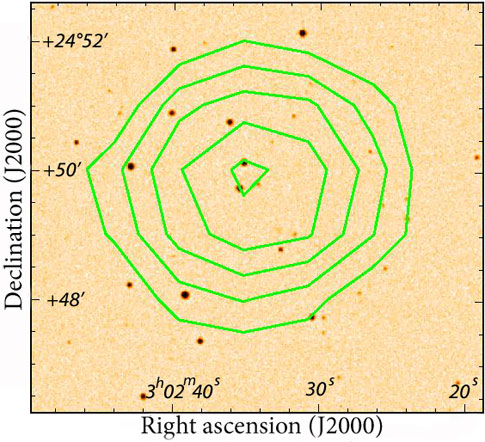Dark galaxies don’t contain many bright stars, so most won’t be found using optical telescopes. However, an abundance of neutral-hydrogen gas alerts radio astronomers to these galaxies’ presence. The telltale gas, centered at a wavelength of 21 centimeters, is found in most galaxies, whether or not they also contain stars.
The Arecibo Galaxy Environment Survey (AGES) aims to detect hidden dark galaxies by searching for neutral-hydrogen gas during its 4-year program. The AGES survey began collecting data in January. By April, the survey had uncovered a dark-galaxy candidate about 153 million light-years away in the constellation Aries the Ram.
Astronomers using Arecibo Observatory’s 1,000-foot (305 meter) radio telescope in Puerto Rico detected the neutral-hydrogen gas cloud in an area that spans 200,000 light-years. The dark cloud lies near NGC 1156, an irregular galaxy in Aries. The search covered a 2° by 2½° field, but no starlight was found in the area containing the neutral hydrogen.
“The new source showed up clearly in the AGES survey as it contains huge amounts of hydrogen gas, but it was missed in all previous searches as it doesn’t appear to contain many bright stars,” says Robbie Auld, a Ph.D. candidate at Cardiff University in Wales. However, the area surrounding NGC 1156 likely contains a lot of dust, which may keep starlight from reaching Earth-based optical telescopes.
Although in-depth optical observations are needed to verify this object as a bona fide dark galaxy, Auld is confident future optical and radio surveys will reveal more of these galaxies. “If there are any more dark galaxies out there in the form of neutral gas with no stars, we’ll find them,” he says.
The AGES survey’s ultimate goal is to learn how much dark matter is hidden within dark galaxies. Results to date were presented at the Royal Astronomical Society Meeting in Leicester, England, on April 6.










